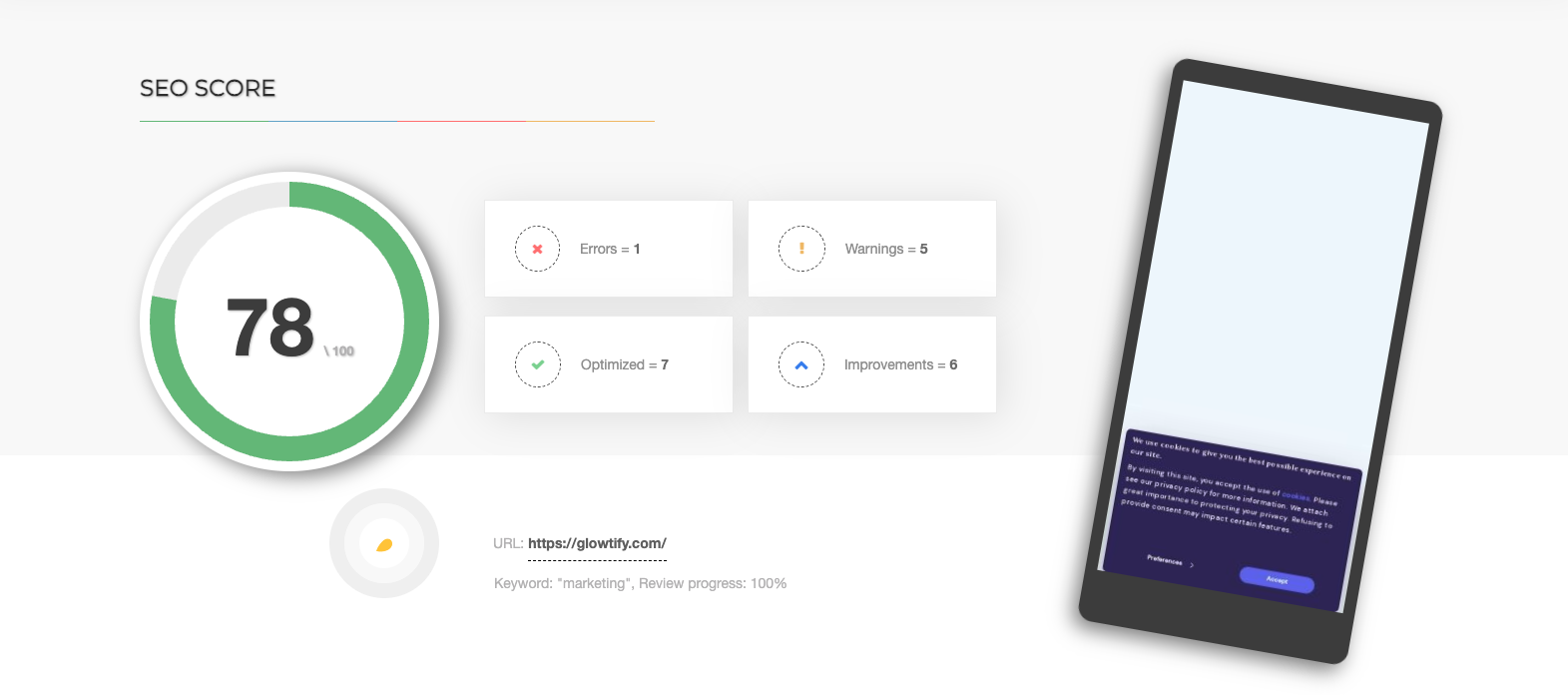Table of Contents
Did you ever feel like you are giving it all you can to market your business online but not seeing the desired results? It may be time to sit down and create a formal marketing plan.
As an entrepreneur, you know that marketing is important to your company’s success. But what does that mean exactly? How do you go creating a marketing plan? And once you have a plan, how do you make sure it’s effective?
This blog post will walk you through everything you need to know about building a successful marketing plan. We will commence with the basics and afterwards move on to more advanced topics. So whether you’re a seasoned pro or starting, read on for helpful tips and advice!
Creating A Marketing Plan.
The first step in creating a marketing plan is to, well, create your marketing plan! There are a few key elements that every successful marketing plan should include:
Set Realistic Goals And Objectives.
The first step in creating your marketing plan is to set realistic goals and objectives. To achieve with your marketing efforts, what do you want? Be specific and real in your goals, and be sure that they align with your overall business goals. As for an example, if your goal is to multiply brand popularity. A specific and realistic objective could be to double your social media following in six months.
To make sure your goals are real, ask yourself these questions:
- What can I realistically achieve given my budget and resources?
- What do I want to achieve in the short-term vs the long-term?
- How will I got to know that my goals are achieved? What metric will I use?
In creating your target audience, setting your goals is the first step.
Create Your Target Audience.
The second step in creating your marketing plan is to define your target audience. The one who are you trying to reach with your marketing message? Be as specific as possible when defining. As for an example, despite saying “small businesses,” you say “small businesses with under 50 employees.”
To create your target audience, consider these questions:

- Who is my ideal customer?
- What are their demographics? (age, gender, location, income, etc.)
- What are their interests and needs?
- How can I reach them? (Which marketing channels will they be using?)
Following the definition of your target audience, you should create your key message.
Develop Your Key Message.
The third step in creating your marketing plan is to develop your key message. What is the general and main message you want to your target audience to know? This is often referred to as your “value proposition.” Keep it clear and concise, and ensure it’s consistent with your brand’s overall tone and voice.
To develop your key message, consider these questions:
- What are those unique and distinctive selling points of my product or service?
- What needs does my product or service address?
- How my customers will be benefitted from my product or service?
- Why should my target audience care about my product or service?
Having developed your key message, it’s time to turn your message into a call to action.
Create Your Call To Action.
The fourth foremost step in creating your marketing plan is to develop your call to action. What do you want your target audience to do after seeing your marketing message? Ensure your call to action is clear, concise, and relevant to your target audience.
To create an effective call to action, consider these questions:
- What should my target audience do? (Buy my product, and sign up for my newsletter, etc.)
- Why should they do it? (What’s in it for them?)
- How can they do it? (Include a clear and concise “call to action” button or link.)
Set Your Marketing Budget.
The fifth step in creating your marketing plan is to set your budget. On your marketing efforts, how much are you willing to spend? Be realistic in your budgeting, and consider allocating a percentage of your overall revenue to marketing. A good starting point is 3-5%.
To set your marketing budget, consider these questions:

- How much revenue can I realistically allocate to my marketing efforts?
- What are my fixed costs? (Salaries, website hosting, etc.)
- What are my variable costs? (Advertising, content creation, etc.)
- How much do I need to spend to reach my goals?
Your marketing strategy needs to be created once you have set your budget.
Develop Your Marketing Strategy.
The sixth step in creating your marketing plan is to develop your marketing strategy. This is where you’ll decide which marketing channels to use to reach your target audience. There are various options available, so it’s important to choose the ones that make the most sense for your business and budget. Some popular marketing channels include:
- Social media (Facebook, Twitter, Instagram, LinkedIn)
- Content marketing (blogging, whitepapers, ebooks)
- Email marketing
- Pay-per-click advertising (Google AdWords)
- Display advertising (banner ads)
- Public relations
After selecting your marketing channels, it’s time to create your marketing calendar.
Create Your Marketing Calendar.
Developing your marketing calendar is the seventh and final step in creating your marketing plan. This is where you’ll map out your marketing activities and campaigns for the year. Include key dates, deliverables, and budget information for each month. Undoubtedly, be sure to leave room for some flexibility, as things will inevitably come up throughout the year that you didn’t plan for.
To create an effective marketing calendar, consider these questions:

- What are my goals for the year? (Sales targets, brand awareness, etc.)
- What campaigns do I want to run? (Product launches, holiday promotions, etc.)
- What events do I want to participate in? (Trade shows, webinars, etc.)
- What content do I need to create? (Blog posts, ebooks, infographics, etc.)
- How much will each activity cost?
What Causes Marketing Plans To Fail-And How Can You Fix It?
It is possible to have the best intentions when implementing a new marketing plan. Despite that, platforms are constantly changing algorithms, plans can go awry, and even the most well-laid plans can be thrown into disarray by global pandemics. Here are the most common reasons why marketing plans fail and what you can do about them.
Lack Of Clarity.
When creating your marketing plan, you must be clear about what you want to achieve. This sounds obvious, but you would be surprised how often businesses fail to set specific and measurable goals. Creating a plan which will help you achieve your desired results is impossible without clarity.
To ensure your marketing plan is successful, be clear about what you want to achieve and include tangible, measurable goals. For example, rather than setting a goal to “increase brand awareness,” set a goal to “increase website traffic by X%.” This will give you a clear target to work towards and allow you to measure the success of your marketing efforts.
Lack Of Focus.
Another common reason marketing plans fail is a lack of focus. When creating your plan, it’s important to focus on a few key objectives and not try to accomplish too much at once. It’s better to focus on a few key things and do them well than try to do everything and end up doing nothing.
Lack Of Engagement.
Lack of engagement from employees is another big reason marketing plans fail. If your employees aren’t on board with your plan, it’s unlikely to be successful. To ensure buy-in from your team, involve them in the planning process and make sure they understand the goals and objectives of the plan. Additionally, provide training and resources to help them execute the plan successfully.
Lack Of Budget.
Another common reason marketing plans fail is a lack of budget. Marketing can be expensive, so your plan will likely fail if you don’t have the budget to do it right. Before creating your marketing plan, ensure you have a realistic idea of how much money you can allocate to marketing. Once you have a budget in mind, you can create a plan to achieve results within that budget.
Lack Of Measurement.
Many marketing plans fail because businesses don’t take the time to measure their progress. Without data, it is impossible to know if your marketing efforts are working. To ensure your marketing plan is successful, include measurable goals and regularly track your progress against those goals. This will allow you to make necessary adjustments along the way and ensure you are on track to achieve your desired results.
What Are The Best Marketing Plan Templates?
Creating your marketing plan takes a lot of time and effort. For your marketing goals, you’ll spend hours researching customers and competitors. Templates, however, can save you time.

You can create a marketing plan using these premade templates without facing the intimidating blank screen.
- Template for a marketing plan from G2
- Template for marketing plans from Monday.com
- Template for marketing plans created by Evernote
Regardless of your marketing plan, remember that not all e-commerce businesses need a comprehensive one. Lifestyle businesses do not require an executive summary of the team involved in turning the plan into action. A publicly traded company needs to expand the goals and measurement section to get stakeholders’ buy-in. Make sure each marketing plan template is tailored to your needs by removing or adding sections.
You can also summarize the main takeaways from your marketing plan with Canva’s marketing presentation templates. Communication with other departments about your marketing plan is preferable to lengthy Word documents.
It’s Hard To Market, But It’s Easy To Create A Pretty Plan.
Marketing plans require a lot of effort. Researching your target market’s needs, audience data, and channels they consult when researching new products will be the key to creating one that is attainable.
Watch out for the mistakes we discussed, from overconfidence bias to little wiggle room to pivot. With that approach, you’ll be able to create a marketing plan with the best chance of success- not that ending up in your desktop trash can two months after you’ve created it.
Remember that marketing is unpredictable. A variety of scenarios can fundamentally change your marketing strategy. Make your marketing plan as good as it can be. Don’t expect to follow a plan to the letter. Set realistic goals and strategies.

Want more SEO traffic?
Discovering the secret to increasing your website’s traffic could be as simple as accessing this Free SEO analyzer tool!
Try it - it's free


